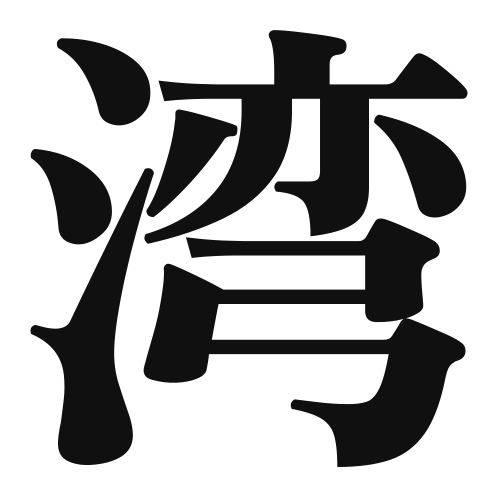1. Overview of Meaning
The kanji “湾” (wan) means “bay” or “gulf.” It refers to a body of water that is partially enclosed by land, often providing a safe harbor for ships.
2. Formation and Radical
Formation of the Kanji: The kanji “湾” is a compound character (会意文字) that combines elements to convey its meaning. The left part “氵” (water radical) indicates its relation to water, while the right part “宛” suggests a sense of enclosure or bending.
Radical: The radical of “湾” is “氵,” which is associated with water-related meanings.
3. Examples of Usage
Common Words and Phrases:
- 湾岸 (わんがん, wangan) – coastal area or bay area
- 湾曲 (わんきょく, wankyoku) – curvature or bending
Example Sentences in Daily Conversation:
- この湾は美しい景色があります。 (このわんはうつくしいけしきがあります。) – This bay has a beautiful view.
- 湾に船が停泊しています。 (わんにふねがていはくしています。) – A ship is anchored in the bay.
4. Synonyms and Antonyms
Similar Kanji:
- 海 (うみ, umi) – sea; while both refer to large bodies of water, “海” denotes the open sea, whereas “湾” refers specifically to a partially enclosed area.
Antonyms:
- 陸 (りく, riku) – land; this term represents solid ground, contrasting with “湾,” which is associated with water.
5. Cultural and Historical Background
Relation to Japanese Culture: The concept of bays is significant in Japan, an island nation with many coastal areas. Bays often serve as important locations for fishing and trade.
Proverbs and Idioms: One common saying is “湾に入る” (わんにはいる, wan ni hairu), which means “to enter a bay,” often used metaphorically to describe finding a safe place or refuge.
